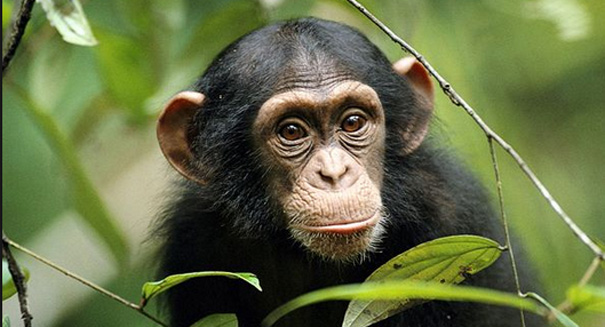
The changes were instigated by the chimpanzee group's leader, who created the first moss sponge.
We’ve all seen friends and family adapt to new technologies. Watching Dad learn how to use a smartphone for the first time was pretty amusing. But are chimpanzees capable of learning new technologies and behaviors?
The answer is yes. Chimpanzees, our closest genetic relatives, are capable of learning and spreading new behaviors– in this case, two new feeding habits. This is the first documentation of cultural transmission in the wild chimpanzee population.
Researchers from the University of St Andrews, Anglia Ruskin University, the University of Neuchatel, and the Universite du Quebec studied the behaviors of wild chimpanzee populations in Uganda’s Budongo Forest. They observed a process known as “leaf-sponging,” in which chimps fold leaves in order to drink water. But they also noticed two previously unseen behaviors: reusing previous leaf sponges and also using sponges made of moss and leaf mixtures.
The changes were instigated by the chimpanzee group’s leader, who created the first moss sponge. A sub-alpha male also reused a leaf to drink water. These practices were gradually adopted by the entire chimpanzee population.
“Here, we present a novel, dynamic network-based diffusion analysis to describe the acquisition patterns of novel tool-use behavior in the Sonso chimpanzee community,” the study noted. “We find strong evidence for social transmission of [new behaviors] along the innovators’ social network, demonstrating that wild chimpanzees learn novel tool-use behaviors from each other and supporting the more general claim that some of the observed behavioral diversity in wild chimpanzees should be interpreted as ‘cultural.'”
While it doesn’t explain exactly why the other chimpanzees adopted these practices from group leaders, the study does demonstrate that social and cultural acquired learning is present in chimpanzee populations. This is significant for the study for human evolution, especially when researching why and how early hominids began using tools. It’s also significant in realizing that cultural practices did not originate in early human populations; they were previously present in primates.
Leave a Reply